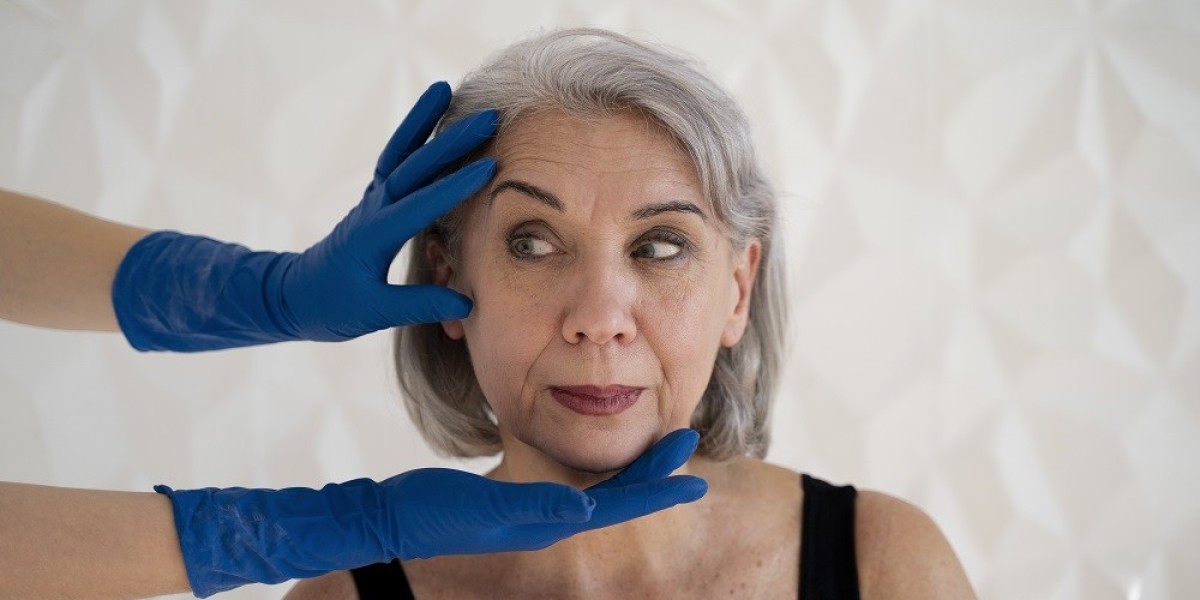Aging is a natural process, but deep facial wrinkles can make you look older than you feel. As time passes, our skin loses elasticity, collagen, and moisture — leading to sagging and the appearance of fine lines that deepen into wrinkles. If you’re searching for the best treatment for deep wrinkles on face, you’re not alone. Dermatologists around the world are constantly innovating and recommending advanced methods to restore youthful, smooth skin.
In this article, we’ll explore dermatologist-approved treatments, from topical therapies to cutting-edge cosmetic procedures, so you can make an informed choice about rejuvenating your skin.
Understanding Deep Wrinkles
Before diving into the best dermatologist-recommended treatments, it’s important to understand why deep wrinkles form.
1. Causes of Deep Facial Wrinkles
Several factors contribute to deep wrinkles, including:
Aging: Natural collagen and elastin decline after your 30s.
Sun Exposure: UV radiation accelerates skin aging, causing collagen breakdown.
Repetitive Facial Expressions: Smiling, frowning, and squinting can create dynamic wrinkles that eventually become static.
Smoking and Pollution: Toxins damage skin cells, leading to premature aging.
Poor Diet and Dehydration: Lack of nutrients and moisture affects skin’s firmness.
Understanding these causes helps dermatologists tailor treatments to your specific needs.
Top Dermatologist-Recommended Treatments
Dermatologists approach wrinkle treatment in multiple ways — targeting both the surface of the skin and deeper structural layers. Here are the most effective dermatologist-recommended options:
1. Retinoids (Vitamin A Derivatives)
Retinoids are among the most trusted dermatologist-prescribed treatments for wrinkles. These compounds increase cell turnover, stimulate collagen production, and smooth out the skin.
How They Work:
Retinoids help fade fine lines and improve skin texture by speeding up new skin cell growth. Prescription-strength versions like tretinoin or adapalene offer faster and more visible results than over-the-counter retinol.
Pros:
Scientifically proven effectiveness
Enhances skin texture and firmness
Reduces pigmentation and uneven tone
Cons:
Can cause initial dryness or irritation
Requires consistent use for months
Dermatologists often recommend starting with a low concentration and gradually increasing to reduce irritation.
2. Chemical Peels
Chemical peels are professional treatments that exfoliate the skin using acids such as glycolic acid, trichloroacetic acid (TCA), or lactic acid.
How They Work:
They remove the top layers of dead skin, stimulate collagen formation, and reduce fine lines and wrinkles. Medium to deep peels can target stubborn wrinkles and sun damage effectively.
Pros:
Quick visible improvement
Enhances radiance and smoothness
Works well for sun-damaged skin
Cons:
May cause redness or peeling during recovery
Requires downtime depending on peel depth
A dermatologist will customize the peel strength based on your skin type and wrinkle depth.
3. Botox (Botulinum Toxin Injections)
Botox remains one of the most popular dermatologist-recommended treatments for dynamic facial wrinkles caused by repeated expressions.
How It Works:
Botox relaxes the underlying facial muscles responsible for wrinkles, especially on the forehead, between the eyebrows (frown lines), and around the eyes (crow’s feet).
Pros:
Quick, non-surgical treatment
Minimal downtime
Results last 3–6 months
Cons:
Temporary results
Must be administered by a skilled professional
Dermatologists emphasize the importance of natural-looking results, avoiding a “frozen” appearance.
4. Dermal Fillers
For static wrinkles — those visible even when the face is at rest — dermal fillers offer immediate rejuvenation.
How They Work:
Fillers made of hyaluronic acid or calcium hydroxylapatite are injected into deeper layers of the skin to restore lost volume and smooth deep folds such as nasolabial lines and marionette lines.
Pros:
Immediate results
Restores youthful plumpness
Long-lasting (6–18 months depending on filler type)
Cons:
Temporary; requires maintenance
Mild swelling or bruising possible
Dermatologists customize fillers based on wrinkle location and skin type for optimal, natural-looking outcomes.
5. Laser Resurfacing
Laser resurfacing treatments are highly effective for deep wrinkles and skin tightening. They work by removing damaged skin and stimulating collagen remodeling.
Types of Lasers Used:
Fractional CO₂ Lasers – target deep wrinkles and improve skin tone.
Erbium Lasers – ideal for finer lines and mild-to-moderate wrinkles.
Pros:
Dramatic, long-lasting results
Improves texture, tone, and firmness
Boosts collagen production
Cons:
Requires downtime (up to 1–2 weeks for deep resurfacing)
Post-treatment redness and care needed
Laser resurfacing is often considered one of the best treatments for deep wrinkles on face, especially when combined with good skincare maintenance.
6. Microneedling with Radiofrequency (RF Microneedling)
This advanced technique combines tiny needles and radiofrequency energy to trigger collagen and elastin synthesis in the deeper dermal layers.
How It Works:
Microneedling creates controlled micro-injuries, and the added RF energy enhances tissue tightening and rejuvenation.
Pros:
Safe for most skin types
Minimal downtime
Long-term collagen boost
Cons:
Multiple sessions required for best results
Mild redness after treatment
Dermatologists recommend this treatment for patients seeking a non-surgical yet effective wrinkle reduction option.
7. Platelet-Rich Plasma (PRP) Therapy
Known as the “vampire facial,” PRP therapy uses your own blood plasma enriched with platelets to rejuvenate skin.
How It Works:
PRP releases growth factors that promote healing and collagen regeneration when injected into facial skin or combined with microneedling.
Pros:
Natural and safe
Improves tone and texture
Gradual, lasting improvements
Cons:
Results take several weeks to appear
May require 3–4 sessions
Dermatologists often pair PRP with microneedling for enhanced effects on deep wrinkles.
8. Ultrasound and Radiofrequency Skin Tightening
Non-invasive treatments like Ultherapy (ultrasound-based) and Thermage (radiofrequency-based) stimulate collagen deep beneath the skin’s surface.
How They Work:
They heat the dermal layers, causing collagen contraction and new collagen formation, resulting in tighter and firmer skin over time.
Pros:
No downtime
Gradual, natural improvement
Long-lasting collagen stimulation
Cons:
Multiple sessions may be needed
Results vary by skin condition
These treatments are ideal for those seeking a non-invasive way to reduce sagging and wrinkles.
Combining Treatments for Maximum Results
Dermatologists often combine multiple treatments for superior results. For example:
Botox + Fillers to address both dynamic and static wrinkles.
Laser + PRP for resurfacing and deep rejuvenation.
Microneedling + Retinoids for collagen renewal and smoother texture.
The combination approach enhances both short-term and long-term wrinkle reduction.
Skincare Routine to Support Professional Treatments
After receiving professional care, maintaining results requires consistent at-home skincare. Dermatologists recommend:
Daily Sunscreen: SPF 30+ to prevent further UV damage.
Moisturizers: With hyaluronic acid or ceramides to keep skin hydrated.
Antioxidant Serums: Vitamin C and niacinamide for brightening and repair.
Gentle Cleansing: Avoid harsh soaps that strip natural oils.
Consistent use of dermatologist-approved skincare products helps prolong treatment benefits.
Lifestyle Habits to Prevent Future Wrinkles
Even the best treatment for deep wrinkles on face won’t last long without healthy lifestyle habits. To prevent further aging:
Stay hydrated and eat antioxidant-rich foods.
Quit smoking and limit alcohol consumption.
Sleep 7–8 hours nightly.
Manage stress to prevent cortisol-related skin damage.
Protect skin from pollution and UV rays daily.
These simple habits work synergistically with dermatologist treatments to keep your skin youthful longer.
When to See a Dermatologist
If you’ve noticed deep-set wrinkles that don’t improve with over-the-counter creams or home remedies, it’s time to consult a professional. Dermatologists can assess your skin, identify the underlying causes, and recommend a personalized plan combining the most effective treatments.
Conclusion
Finding the best treatment for deep wrinkles on face depends on your age, skin type, and wrinkle depth. Dermatologists recommend a mix of science-backed methods — from retinoids and peels to Botox, fillers, and laser resurfacing — to help you regain smooth, radiant, and youthful-looking skin.
By combining professional care with a healthy skincare routine and lifestyle, you can achieve long-lasting results that enhance your natural beauty.



